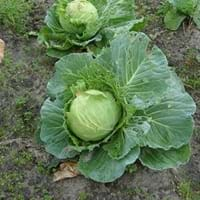Life Span
Perennial
Annual
Type
Bulb or Corm or Tuber
Vegetable
Origin
South America, Argentina
Europe, Mediterranean, Canary Islands, Northern Africa
Types
Not Available
Not Available
Habitat
Temperate Regions
Not Available
USDA Hardiness Zone
5-9
Not Available
Sunset Zone
21,22
A1, A2, A3, H1, H2, 1a, 1b, 2a, 2b, 3a, 3b, 4, 5, 6, 7, 8, 9, 10, 11, 12, 13, 14, 15, 16, 17, 18, 19, 20, 21, 22, 23, 24
Habit
Clump-Forming
Rosette/Stemless
Flower Color
Light Blue, Light Purple, Silver, Sky Blue
Yellow
Flower Color Modifier
Bicolor
Bicolor
Fruit Color
Not Available
Brown
Leaf Color in Spring
Green, Light Green, Gray Green
Not Available
Leaf Color in Summer
Light Green
Green, Gray Green, Dark Green
Leaf Color in Fall
Several shades of Green
Green, Gray Green
Leaf Color in Winter
Light Green
Green, Gray Green
Leaf Shape
Grass like
Spinach Type
Plant Season
Spring
Spring, Fall, Winter
Sunlight
Full Sun, Partial Sun, Partial shade
Full Sun, Partial Sun
Type of Soil
Clay, Loam, Sand
Loam, Sand
The pH of Soil
Acidic, Neutral, Alkaline
Neutral, Alkaline
Soil Drainage
Well drained
Well drained
Bloom Time
Early Spring, Spring, Late Winter
Spring, Late Spring, Early Summer
Tolerances
Drought
Drought
Where to Plant?
Container, Ground
Container, Ground, Pot
How to Plant?
By dividing rhizomes, tubers
Seedlings
Plant Maintenance
Medium
Medium
Watering Requirements
Average Water Needs, Do Not over Water, Requires regular watering
Do Not over Water
In Summer
Lots of watering
Lots of watering
In Spring
Moderate
Moderate
In Winter
Average Water
Average Water
Soil pH
Acidic, Neutral, Alkaline
Neutral, Alkaline
Soil Type
Clay, Loam, Sand
Loam, Sand
Soil Drainage Capacity
Well drained
Well drained
Sun Exposure
Full Sun, Partial Sun, Partial shade
Full Sun, Partial Sun
Pruning
Remove damaged leaves, Remove dead branches, Remove dead leaves
No need to prune, Remove damaged leaves, Remove dead branches, Remove dead leaves
Fertilizers
All-Purpose Liquid Fertilizer
Nitrate based fertilizers
Pests and Diseases
Slugs, Snails
Alternaria Leaf Spot, Anthracnose, Aphids, Beet armyworm, Black rot, Cabbage looper, Cercospora leaf spot, Clubroot, Cutworms, Damping-off, Diamondback moth, Downy mildew, Flea Beetles, Leaf spot, Red blotch, Root knot nematode, Thripes
Plant Tolerance
Drought
Drought
Flower Petal Number
Single
Single
Foliage Texture
Medium
Bold
Foliage Sheen
Matte
Matte
Attracts
Bees, Birds, Hummingbirds
Bugs
Allergy
Not Available
Not Available
Aesthetic Uses
Showy Purposes
Not Used For Aesthetic Purpose
Beauty Benefits
Not Available
Not Available
Environmental Uses
Air purification
soil erosion prevension on hill slopes
Medicinal Uses
No Medicinal Use
anti-cancer, Heart problems
Part of Plant Used
Flowers
Leaves
Other Uses
Not Available
Used as a vegetable
Used As Indoor Plant
Yes
No
Used As Outdoor Plant
Yes
Yes
Garden Design
Container, Lawns and Turf, Mixed Border, Rock Garden / Wall, Wildflower
Container, Edible, Herb / Vegetable
Botanical Name
Ipheion uniflorum
BRASSICA oleracea
Common Name
Spring Starflower, Springstar
Carolina Cabbage Collard Greens, Collard Greens
In Hindi
Spring Starflower
collard साग
In German
Frühling Borretsch
Blattkohl
In French
Spring Starflower
Chou cavalier
In Spanish
primavera Flor de estrella
Brassica oleracea viridis
In Greek
άνοιξη starflower
λάχανο
In Portuguese
primavera Starflower
greens kollard
In Polish
Wiosna Starflower
kollard zieleni
In Latin
Spring Starflower
vireta kollard
Phylum
Magnoliophyta
Magnoliophyta
Class
Lilopsida
Magnoliopsida
Order
Asparagales
Brassicales
Family
Liliaceae
Brassicaceae
Clade
Angiosperms, Monocots
Not Available
Tribe
Gilliesieae
Brassiceae
Subfamily
Allioideae
Not Available
Number of Species
Not Available
Season and Care of Spring Starflower and Collard Greens
Season and care of Spring Starflower and Collard Greens is important to know. While considering everything about Spring Starflower and Collard Greens Care, growing season is an essential factor. Spring Starflower season is Spring and Collard Greens season is Spring. The type of soil for Spring Starflower is Clay, Loam, Sand and for Collard Greens is Loam, Sand while the PH of soil for Spring Starflower is Acidic, Neutral, Alkaline and for Collard Greens is Neutral, Alkaline.
Spring Starflower and Collard Greens Physical Information
Spring Starflower and Collard Greens physical information is very important for comparison. Spring Starflower height is 10.20 cm and width 5.10 cm whereas Collard Greens height is 30.50 cm and width 30.00 cm. The color specification of Spring Starflower and Collard Greens are as follows:
Spring Starflower flower color: Light Blue, Light Purple, Silver and Sky Blue
Spring Starflower leaf color: Green, Light Green and Gray Green
Collard Greens flower color: Yellow
- Collard Greens leaf color: Not Available
Care of Spring Starflower and Collard Greens
Care of Spring Starflower and Collard Greens include pruning, fertilizers, watering etc. Spring Starflower pruning is done Remove damaged leaves, Remove dead branches and Remove dead leaves and Collard Greens pruning is done No need to prune, Remove damaged leaves, Remove dead branches and Remove dead leaves. In summer Spring Starflower needs Lots of watering and in winter, it needs Average Water. Whereas, in summer Collard Greens needs Lots of watering and in winter, it needs Average Water.





